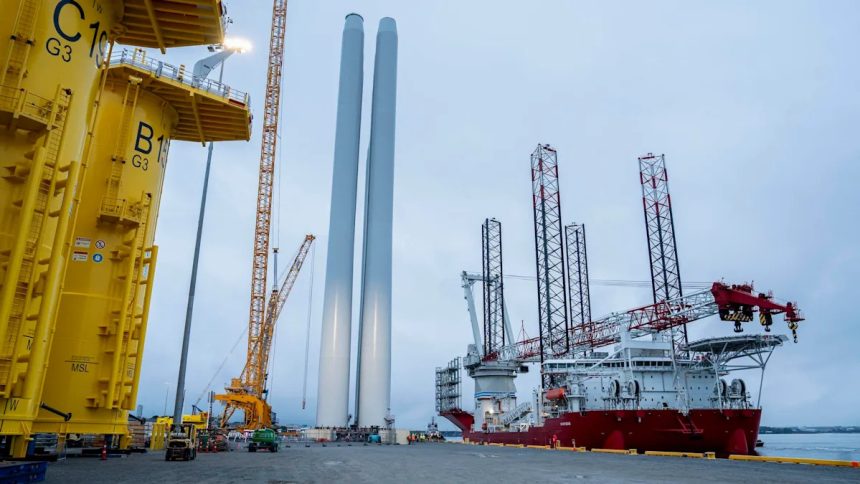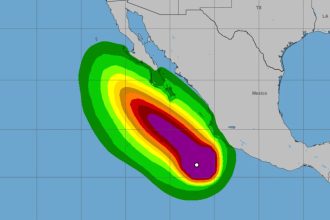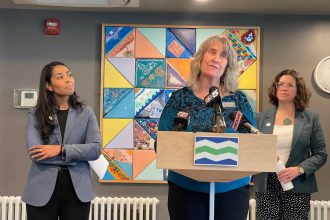The first wind farm slated to plug into New York City’s grid has already endured one political catastrophe this year. Now, a logistical crisis looms on the horizon.
Equinor’s Empire Wind is a 810-megawatt project being built about 20 miles off the shore of Long Island, promising enough energy to power 500,000 homes once completed in 2027. The Trump administration halted construction in April, but allowed it to resume in May. The latest challenge came on Thursday with the unexpected cancellation of a contract for the massive new wind-turbine installation vessel that Equinor had been planning to use on the project next year.
Two shipbuilding companies broke out into a public skirmish — one unexpectedly cancelling a contract and the other threatening legal action — over the construction of the specialized ship. The fate of the vessel, which is already more than 98% complete and floating in Singapore’s waters, is now uncertain.
The cancelled $475 million agreement leaves Equinor scrambling to figure out how to maintain progress and bring Empire Wind online on schedule.
“We have been informed by Maersk of an issue concerning its contract with Seatrium related to the wind turbine installation vessel originally contracted by Empire Offshore Wind LLC for use in 2026,” said an Equinor spokesperson via email. “We are currently assessing the implications of this issue and evaluating available options.”
Only a handful of vessels in the world are capable of lifting, carrying, and piecing together the massive steel components of offshore turbines.
Thursday’s news highlights the complexity of bringing just one U.S. offshore wind farm over the finish line, given the combination of logistical difficulties and political obstacles put up by the Trump administration.
In an email to Canary Media, Maersk Offshore Wind spokesperson Caroline Knox confirmed that the company terminated its building contract with Seatrium “due to delays and related construction issues.” Knox declined to comment further.
Seatrium told Reuters it was evaluating its options for the vessel, including via ongoing talks with Empire Wind, and considering legal action.
Singapore-based Seatrium is fresh off the monumental achievement of berthing a first-of-its-kind offshore-wind installation vessel in U.S. waters. In September, the company delivered the $715 million Charybdis from its Brownsville, Texas, shipyard to the Portsmouth Marine Terminal in Virginia. The American-made vessel is owned by utility Dominion Energy, which immediately put it to work building the largest offshore wind farm in the U.S. The ship’s smooth delivery is a major reason why the Coastal Virginia Offshore Wind farm is progressing fast enough to have a new March 2026 launch date.
The ship’s hull is 472 feet long and 184 feet wide, making it one of the biggest vessels of its kind in the world. And, more importantly, it was built to serve the entire U.S. sector — not just Dominion Energy’s project. In other words, the Charybdis could be a solution to Equinor’s new problem.
“Upon the completion of its charter with [Coastal Virginia Offshore Wind], the versatile Charybdis will be available to support a variety of projects, including offshore wind and other critical heavy lift shoreline projects, such as salvage operations or other energy projects,” said Jeremy Slayton, a Dominion Energy representative, in an email to Canary Media.
An Equinor spokesperson provided no comment about Charybdis but reiterated that the company is exploring all options. Having survived the recent political storm, the company is well positioned to navigate these latest headwinds.









